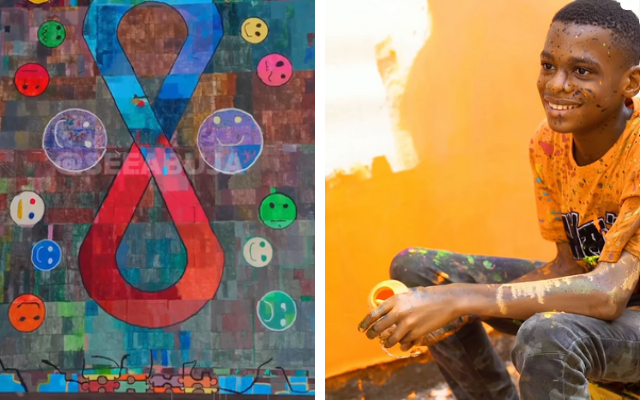Congratulations are in order for 15-year-old, Kanyeyachukwu Tagbo-Okeke. The autistic teen is not letting anything dull his shine as he has just broken the world record for having painted the largest art canvas, earning him a Guinness World Record title.
The record-breaking painting, entitled “Impossibility is a Myth,” was unveiled on April 2, a day internationally recognized as World Autism Acceptance Day.
His mother, Silva Tagbo-Okeke, told CNN, that the painting is meant to symbolize awareness and acceptance. The piece features technicolor hues and a large turquoise and coral infinity symbol in the middle, surrounded by facial expressions with different emotions. Kanye’s mother told the outlet that her son’s work, ever since he started painting at five-years-old, has always featured the theme of smiles and joy.
“He doesn’t talk, but he wants his art to tell his story on his behalf,” Silva told CNN.
“This opens a whole new world of possibilities for special needs children and their caregivers,” Kanye’s parents told guinnessworldrecords.com in an interview.
“In addition to autism awareness, inclusion and neurodiversity, it also gives hope that there are infinite possibilities in every human irrespective of the diagnosis.”
Kanye’s painting and world record title has not only helped to raise awareness about autism, he has also helped the The Zeebah Foundation, which is a nonprofit that focuses on providing support to those on the spectrum and their families, raise funds for their autism resource center.
Per a recent research study from the Centers for Disease Control and Prevention (CDC), autism rates among U.S. children have reached an all-time high. According to the latest data, 1 in 31 children aged 8 or younger have been diagnosed with autism spectrum disorder (ASD), marking a significant increase from previous years.
Several factors may contribute to the rising prevalence of autism. Improved awareness, better screening processes, and expanded diagnostic criteria have likely played roles in identifying more cases. Researchers have also found that autism diagnoses are now more common among Asian, Black, and Hispanic children than their White peers, marking a significant shift in historical patterns.
Photo: Kanyeyachukwu Tagbo-Okeke Instagram; Seeabuja Instagram







